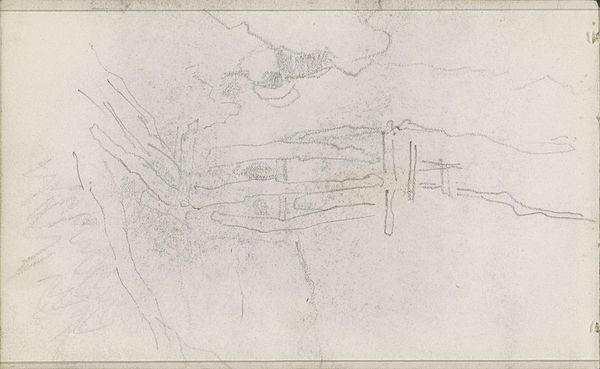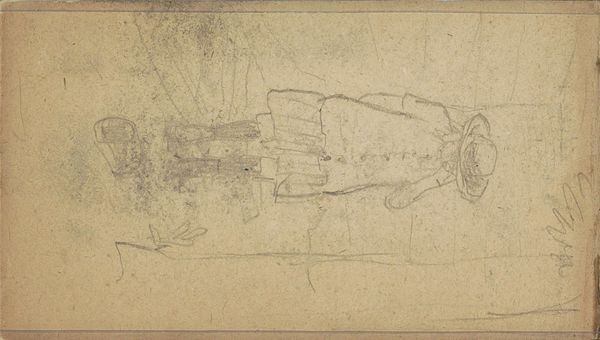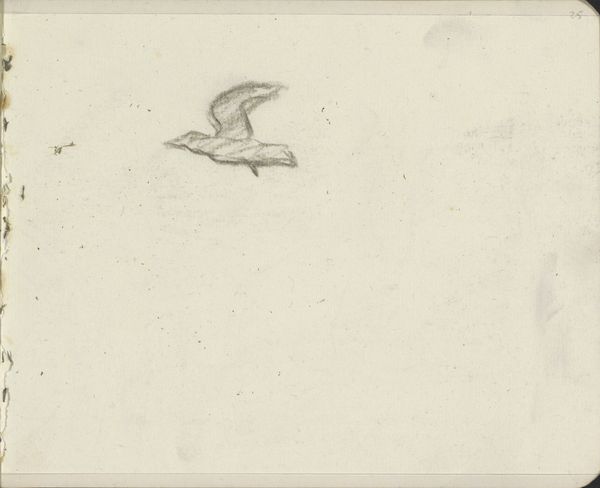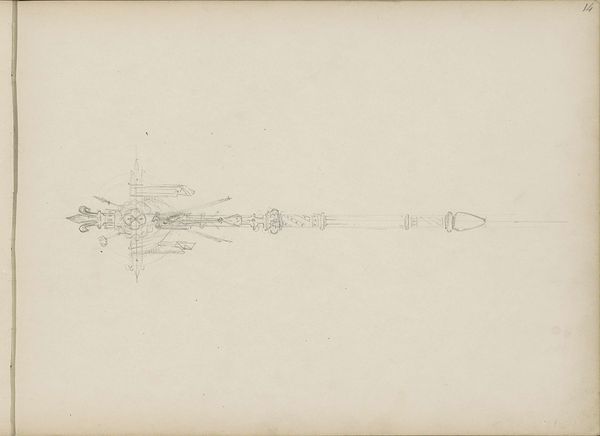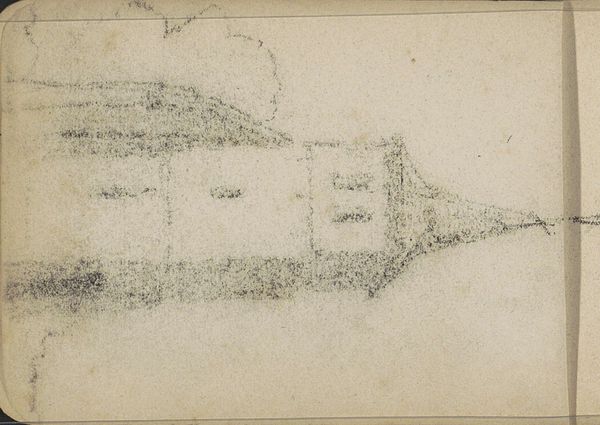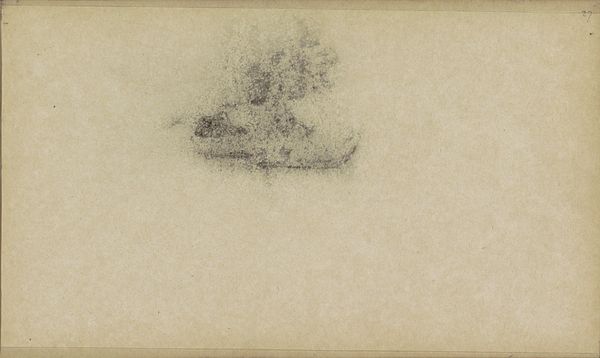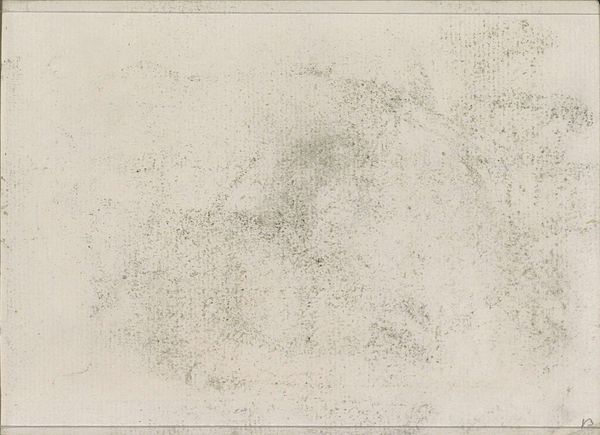
#
amateur sketch
#
aged paper
#
toned paper
#
light pencil work
#
pencil sketch
#
incomplete sketchy
#
hand drawn type
#
fading type
#
watercolour bleed
#
watercolor
#
building
Dimensions: height 158 mm, width 247 mm
Copyright: Rijks Museum: Open Domain
Curator: I’m drawn to the fragility of this image—it feels incredibly intimate and immediate. Editor: This is "Toren," a pencil and watercolor sketch created by Willem Cornelis Rip between 1876 and 1877. What we see is an architectural study on toned paper. There's an aged quality to it. Curator: Yes, it's evocative of a certain era, yet incomplete, fleeting. The artist's hand is so evident; those light pencil strokes almost feel like whispered thoughts about power structures, or perhaps just colonial infrastructure as a visual manifestation of wealth. I want to examine what social hierarchies are supported when constructing buildings in specific ways. Editor: And that materiality matters greatly, doesn't it? Consider how the paper itself has aged. The stain in the top left. It speaks volumes about the object’s history and physical presence. Also the way that it is a watercolor that bled through the layers on the page gives depth to the production method that deserves more consideration when evaluating this piece, beyond merely observing compositional aspects like tonal quality Curator: Absolutely, this materiality informs its social and cultural implications, for it speaks of ephemerality. The delicate medium becomes part of the wider narrative. The artist probably thought about making this very cheap material. The aged paper transforms the tower itself into an artifact bearing the marks of the past. But let us zoom out; if a tower represents the established forces that are in our world, do the materials show whether these constructs are long-lasting and worthwhile, or feeble? Is this watercolor on paper telling us it is the latter? Editor: I’m curious to know the cost and ease of obtaining these tools, if the material meant he sketched to sell quickly or slowly, or even simply for the exercise to sell for a small profit or nothing at all. Perhaps he also created oil on canvas using the profits he received after completing those watercolors... We often have these assumptions about production and consumption, that may in fact not reveal anything that is truly related to political struggles and colonial exploitation, but could potentially reflect individual factors instead! Curator: Yes, the labor inherent in the materials, the modes of production... It reminds us to resist generalizations and instead engage with specificity, examining how gendered and classed power dynamics impact both the maker and the viewed object within capitalist culture. Thank you, for considering the materialist concerns behind this picture. Editor: It has been most illuminating to consider the socio-political dimension of an art medium!
Comments
No comments
Be the first to comment and join the conversation on the ultimate creative platform.
